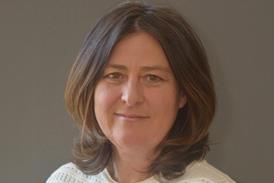NHS England’s new chief strategy officer has set out plans to establish ‘a single, aligned leadership team’ that will include local CEOs, and promised ‘more immediate tactical communication channels’ with the centre
Chris Hopson became NHSE’s first CSO last week, joining from NHS Providers where he was chief executive for 10 years.
This week he wrote to local chairs and chief executives stating that he had agreed with NHSE CEO Amanda Pritchard that “an immediate priority should be to deliver on the commitment she has made to create a new relationship between NHS England (NHSE) and senior frontline leaders based on the principle of co-creation”.
However, he warned it would require them to “preserve appropriate confidentiality”.
Mr Hopson’s letter, seen by HSJ, says: “The strategic objective is to create a single, aligned, leadership team across NHSE national and regional leaders, [integrated care board] chairs and CEOs, and trust chairs and CEOs…
“Creating a deeper, more regular, and more effective two-way dialogue across this group is one important way to deliver this objective, and an area where my new team can make immediate progress.” He also referred to the new “operating model” being developed by NHSE which “we expect to complete in the Autumn”.
Mr Hopson’s letter goes on: “Co-creation, unlike engagement or consultation, requires co-design from the start. I am therefore establishing a new co-creation task and finish group to create the more effective two-way dialogue that we all need.
“Subject to the task and finish group’s thoughts, I envisage us looking at establishing a regular written communication for this senior leadership community with a linked feedback channel; systematising NHSE’s leadership conferences, webinars and events with you, and looking at more immediate tactical communication channels.”
He says it is “vital this activity complements, rather than cuts across, the strong and successful relationships” between local organisations and their NHSE regional directors; and feedback via NHS Providers and NHS Confederation.
He adds: ”I will want the group to think through issues such as how we preserve appropriate confidentiality across a wide group if we are to share greater, and potentially time sensitive, information on what the NHSE exec team are doing; and how we develop the right dialogue with local primary care leaders, including primary care network leaders.”
The letter goes on to highlight potential problems with “timely and accurate distribution of NHSE communications”, stating: ”I know that, in the past, timely arrival of NHSE communications has been a source of frustration for some, particularly chairs. As you know, we have moved to a Single Point of Contact (SPOC) system where we distribute major NHSE comms via a single point of contact in your organisation and rely on that SPOC to then distribute those communications to appropriate recipients. Let me know if you think there is anything that NHSE can do to improve the SPOC system, using this letter as a test of its effectiveness.”
One hospital trust chief executive told HSJ they had not yet seen Mr Hopson’s letter, dated 20 June, and another that it had reached them via “a convoluted route”.
Mr Hopson asked for feedback and said he wanted “the task and finish group to come back in August with formal proposals”. Those wanting to take part in the group can email england.chiefstrategyofficer@nhs.net.
Source
Letter
Source Date
June 2022



























26 Readers' comments